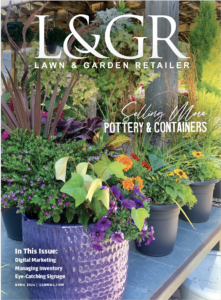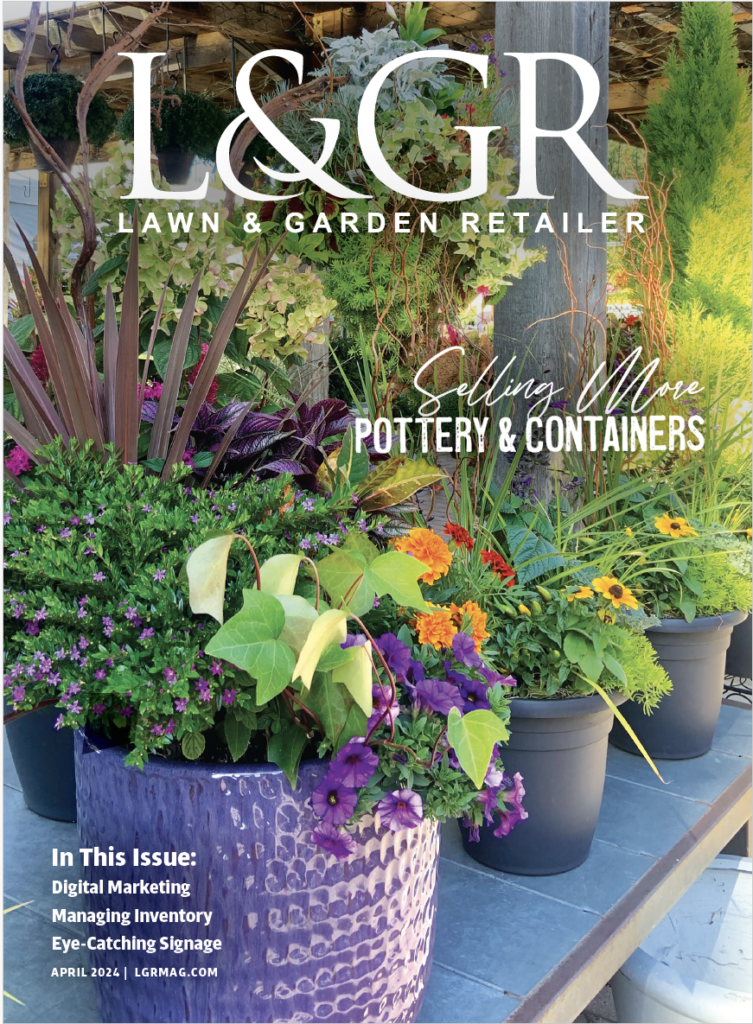Pohmer On…I’m Confused!
I admit it, I’m confused. (Most of you are shaking your heads because I actually publicly admitted infallibility, and the others are nodding, saying, “Yeah, we knew that already!”)
In all seriousness, I’m concerned and confused about some significant position shifts taking place in the marketplace today. And these changes are taking away some significant advantages and points of differentiation that independent garden centers (IGC) have traditionally had over the big boxes.
Looking Back
Let’s look back not too many years ago. The big boxes discounters, home improvement chains, warehouse clubs and supermarkets were not even considered by the IGCs as serious competition. Sure, the boxes sold low-priced stuff, but consumers actually got exactly what they paid for poorly maintained, marginal quality merchandise that was poorly displayed; few staffers with little gardening knowledge; and the same assortment at each store no matter the state or region. We also scratched our heads in amazement over the blunders they made in their print advertising from a copy and climate-zone-offering standpoint.
Independents weren’t threatened by these guys because they knew consumers were smarter than that and would come back after being disappointed with their initial purchases from the boxes. IGCs were “real” nurseries full of industry people who knew product, communities, customers and consumers, and consumers were willing to pay premium price for the better mousetrap.
Moving Forward
Let’s fast forward to just a few years ago. IGC sales and profits were down dramatically because that dumb consumer bought into the low-price hype that the boxes were promulgating. IGCs recognized there were a whole lot of customers being mesmerized by that sweeping culture change we now call the Wal-Martization of America, where good quality and a bare-bones, self-service shopping experience was very acceptable as long as the price was right. Being led to the brink of financial doom forced many IGCs to make some hard choices:
1. Some decided not to fight (or didn’t know how or have the energy to), and gave up.
2. Some decided to fight the war on the boxes’ playing field and tried to beat them at their own price-focus game. This was a game most IGCs could never hope to win and forced many to join their brethren in the first group.
3. The survivors recognized they couldn’t beat the boxes with the rules of low overhead working against them, so they decided to fight the battle in a different direction, something akin to guerilla warfare. Using new tactics, the successful IGCs either repositioned their images and identity or extended the major points of differentiation between them and the boxes, a “hit’em where they ain’t” strategy.
This third group of IGCs, those brave enough to re-invent themselves and try new things, became the nucleus for a re-invigorated garden center community. This was a community where consumers, at least the intelligent and discrimin-ating ones, would come to shop where quality standards and maintenance were better. A place where having the right assortment in the right climate zone at the right time of year made a difference or where trained employees provided better guidance to help their customers succeed.
Being good stewards of the earth, many IGCs included native and non-invasive plants and trees to their assortments and carried/expanded their assortments of eco-friendly, natural and organic hardlines and treatments. These efforts were strong points of differentiation between the IGCs and the boxes: The IGCs were viewed more as “friends of the environment” than the big guys and, whether they consciously recognized it or not, it was a strong purchase-behavior motivator to IGC customers.
Present Tense
Now, let’s fast forward to the present. The boxes are much improved in assortments and presentation, closing that differentiation gap. Much to most people’s amazement, Wal-Mart has embraced the environmental and global warming movement and is leading the charge toward changing the way consumers think about what they purchase and why. It has added and expanded organic foods to its supercenter formats and wants to convince consumers to swap those non-eco-friendly incandescent bulbs with compact florescent fights. The superstore is mandating its suppliers reduce the size and waste of packaging and start using biodegradable materials. Wal-Mart is testing solar panels on the roofs of its stores and distribution centers and adding skylights to reduce energy use.
Make no doubt about it, it is making these changes not only because it’s the right thing to do (though it wasn’t the real reason it initially started down this path) but because it saves Wal-Mart money and adds to its bottom line. And the company is accelerating the speed of expanding these programs because it’s giving it great public relations exposure and momentum!
Remember, Wal-Mart’s image has been beat up pretty badly over the past few years, but the positive public relations it is generating with these new programs is starting to change the tide of consumer sentiment in Wal-Mart’s favor.
Don’t forget the socio-environmental efforts of Home Depot. It is introducing its new Eco Options program that, within a few years, will encompass 12-15 percent of its total merchandise offerings.
Even regional chains like Meijer are getting on the bandwagon, adding (and actively promoting) its non-invasive species trees and shrubs.
However, please don’t take my comments the wrong way; I applaud the efforts these box retailers are taking. They are out for the environmental and social benefits these programs deliver and for the education and exposure they are giving these efforts to reduce global warming and improve the earth. Also, for the brilliant execution of turning this into a public relations and image coup!
The Confusion Ensues
Therein lies the crux of my confusion. Traditionally and in reality, IGCs have always been perceived as purveyors of more natural and earth-friendly products; consciously or unconsciously, this has been a major point of differentiation between you and the boxes. From walking your stores, I know you are doing more and are more committed to these programs than the boxes are you’re doing it for the right reasons and you walk the talk. But the reality is you’re losing the public relations war on a major point of differentiation that existed in your favor!
I’m not suggesting you change your entire program over to certified organics. That would be overkill and the eco-consumer base, though growing, isn’t large enough to sustain most garden centers. What I am asking is why you’re not leveraging your strengths before the boxes marginalize your advantage. Why are you not consciously using these programs on your in-store signage and displays, in your advertising and the promotion of your image? Why are many of you already doing all the right things with regard to environmental sustainability but not getting any credit for it when some of your erstwhile competitors are doing half as much and reaping a public relations and image bonanza?
I’m concerned because the recent renewal of the IGCs was built on creating wider points of differentiation with the boxes, something that demonstrated value benefits that transcended price. It came from a re-positioning of the IGC in consumers’ minds through offering new and enhanced services and assortments.
Big Box Encroachment
But the boxes are starting to encroach onto your playing field. Their assortments are improved. Through their supplier-managed merchandising programs, they have more expertise and better timing decisions are being made. Care and maintenance are improved. They smell the opportunity to re-invent themselves, much as you did when the boxes made inroads into your turf and you repositioned your image.
Though many of the players are the same, the playing field is constantly changing and momentum is always shifting back and forth. With the recent initiatives and the positive public relations of the boxes, right now the IGCs are losing some momentum.
You have the advantages in assortment, programs and image, but now the boxes have the public relations momentum in their favor. They’re attacking your strengths. It’s time to take back control of the game and get the momentum moving back in your favor…


















 Videos
Videos





